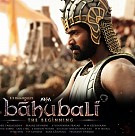Cinema and education at one point in time were never considered to complement each other. If you weren’t bright in academics, that readymade comment would generously be flashed at you to go join the movies. Or if a brilliant student takes to films, the stupefaction would be hard to hide in that “What are you of all people doing in this industry? ”Movie watching time for those still in school were allowed in limited bouts only after their study time and when in college, bunking classes invariably had a movie watching agenda in the top three list that one could do. If you were an actor or a technician or musician, you couldn’t possibly double up as a successful entrepreneur or restaurateur or a professional consultant that requires specific skills at management. If it had to do with films, it had to be entertainment and never perceived to impart the skill of management from watching, observing or even working in films. Six years after the first course on the business perspective of ‘Contemporary film industry’ was introduced in the country’s top-notch business school, IIM- Ahmedabad and with more such institutions following suit in offering similar courses, the country is well on its way to producing a cauldron of film highbrows gradually. With over 1000 films released every year in about 16 languages in our swelling Indian films market, there’s an equal amount of trained film professionals required to meet that demand of making quality films especially after corporatization of the film producing business.
Given the obvious fact that creative people have to be a genius in the first place to make great music or movies, it was never the other way round where you become more talented and proficient if you’re in movies. Film-specific course modules that have been catching up over the years aim to highlight that on-the-job learning on a film set teaches you various lessons on financing, cost control, marketing, branding, teamwork, crisis management and human resource management. Two things come out of such film industry courses taught at management schools: You either absorb the lessons in management and use them for cross-sectoral application when you take up another industry’s job or you get placed in corporate media houses that welcome management graduates who’ve specialized or opted for such elective courses in their business schools.
In a chance meeting with Mr. Kandaswamy Bharathan of Kavithaalaya, an alumnus of IIM-A and a pioneer in teaching film industry courses at B-schools besides being popular for his speeches in various business forums and summits, he briefly gave few snippets of how management education can be made very interesting and relevant through the study of films. As I get inducted into his realm of knowledge on this subject, Mr. Bharathan says cinema when treated as a branch of studies encourages us to look in three dimensions. First being ‘Cinema as a product’ which has to be, like any other product, creatively designed, efficiently produced and innovatively marketed. Secondly ‘Cinema as a creative process’ bringing together the creativity of different people in one project for one unique movie whose collective talent and technology are headed by the director. Unique because a movie cannot be replicated like a car in a factory so much that not even one song can be repeated in another movie. It’s a different thing that many movies look so similar owing to a clichéd storyline and beaten to death treatment of screenplay. But by and large, every project has to be created in its own unique format. This was corroborated by actor Dhanush during his visit to IIM-A in one of his guest lectures, accompanied by his music partner Aniruddh, where he said that the phenomenon of ‘Kolaveri di’ can never be replicated in a similar fashion and we will never know what will click or bomb until it really happens. Lastly, Cinema can be treated ‘as a socio cultural tool of communication’ where movies have that extensive reach and impact to convey, for example, the message of patriotism as in movies like ‘Roja’ in Tamil or ‘Border’ in Hindi. Or even give us a window for spreading our culture as the film ‘Muthu’ did in Japan when women starting wearing salwar kameez, North Indian restaurants out there started serving masala dosai, created a demand for filmy-style dancing schools and also had a spillover on their interest to learn Indian classical dance. Nothing impacts a society more positively than movies and it can be a powerful medium to convey a serious message in an entertaining or impressionable way.
The moment he spoke about Tamizh films, my antenna perked up to know more about his corresponding references to teaching project management excellence. Mr. Bharathan elucidated on one instance that posed a challenge to the production manager of the film ‘Roja’ when Director Mani Ratnam gave a short notice to organize 200 goats to be used in a sequence just before dusk in Sundarapandipuram village where they were filming the famous song ‘Chinna Chinna Aasai’ with its lead heroine Madhubala. It was a real life situation of managing logistics in quickly finding goat owners in the vicinity and assembling several farmers together (as no individual farmer may have 200 of them) to convince them to lend their goats for a film and manage their demands uniformly. The assistant directors and the production managers on the spot may not have had their MBAs in paper but they were very much applying what a B-School teaches you in a classroom through textbooks on logistics and supply chain management. And when things don’t go as planned on a particular shooting day, that is when crisis management comes into play as in the case of filming a song for ‘Punnagai Mannan’ where Mr. Kamal Haasan sustained a minor injury during a dance sequence and they immediately had to reschedule those shots and make use of the day for other scenes possible in the given location and with available artists for that day. There needs to be a Plan B for everything and that holds good in business or in films.
Such anecdotes stirred my interest and I was all ears when he spoke about how he teaches emotional intelligence required to be working in an organization. It’s all about managing people’s egos in an environment that involves a multitude of opinion clashes, creative differences, attention clamor and designation hierarchies from lightmen to spot boys to ADs to character artists to established stars. He has learnt that from his father-in-law and veteran filmmaker K. Balachander who always praises in public and criticizes in private so they can come back to the set with their dignity intact and a charged vigor at improving their work rather than being ashamed after being reprimanded in front of the entire team. Even as a producer himself, Mr. Bharathan had to manage the pride of the mansion’s owner who’d lent their place for the filming of ‘Muthu’ and sensed her crabby antics of fussing over the unit moving her palace’s props for the shot and falsely accusing them of creating scratches on the floor only because she was too proud to convey her eagerness to meet Superstar Rajinikanth in person. He understood that sensitivity (something she confessed to him much later) and organized a photo op the same evening with the ever-humble Rajinikanth and made her day. Handling your colleagues’ and bosses’ mood swings and egos in your office requires the same level of emotional intelligence in sensing brewing trouble and dousing it off even before it escalates, he said.
Certain project management tools that are often taught in MBA include CPM (Critical Path Method) and PERT (Program Evaluation Review Technique) and my hands went up to take it a little slow on what he just said before I zone out on incomprehensible land. But he quickly breaks it down for me on how projects are typically broken down into activities that are ‘Parallel and ‘Sequential’ that calls for a great deal of planning every aspect of film-making. Stay with me for a few more seconds as I did too when he elaborated on how ‘parallel’ activities are those that can happen simultaneously like the editing of first schedule of the film portion already shot can happen parallel to the location scouting or casting finalization for the second schedule of the shoot after a break. ‘Sequential’ activities are those that require completion of one department like in the case of composing the tunes first and getting a rough-cut at least, before the song can be filmed with the artists. Unless it’s a montage song, choreography based songs require such sequential planning among the many examples he gave to explain the concept. While I wondered if this was so important to focus on, Mr. Bharathan enlightened me that such application of tools and techniques can actually reduce the overall production costs by 20%, bring down the number of days required for shoot and bring in more efficiency in the overall shooting environment. This in turn keeps the film’s budget in control and very often decides the fate of a movie being declared a hit or a flop based on whether they recover the money after release and make profits.
For someone to be so passionate about teaching and films simultaneously, my last question was how has it benefitted him (definitely not about the money for a man who offered the distribution rights of ‘Muthu’ in Japan for one dollar! in exchange for promoting more Indian films there) or his students at IIM-A and other institutes where he visits regularly. He chuckled and concluded that such courses have earned immense respect from B-school students and changed their perception about film industry and the hard work behind it. His dream is to nurture students to grow up with the ambition of making this industry a more professional space to work in and consider it as a career opportunity like any other profession. A small town unemployed guy who knows every corner and landmark of his village or district can very well become the location manager and earn a decent salary from providing unique location spots and getting permissions for shooting. An upcoming lawyer can specialize in providing niche services on copyrights, artist contracts, controversial cases stalling a film’s release and other such film-related legal aspects that also get taught in one session of his course module. As I took leave from him, my greedy film-buff self wished I was bright enough to get into IIMs to be one of his privileged students who’s privy to not just his teachings but from various industry intellects like Aamir Khan who have shared their experiences and possibly Mr. Kamal Haasan who has promised to visit this year sometime. But Mr. Bharathan did give me a hint that something is coming up soon for the non-academic lot to have access to what is being taught there with the format and logistics currently being worked out for generating more certified professionals. Until then, when parents or friends scuttle your plans of catching or working in a movie, wink and perplex them that you’re imbibing management lessons from the art and science of film-making.












